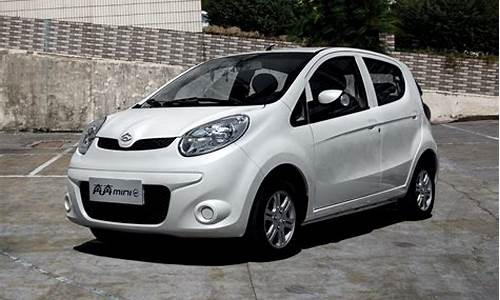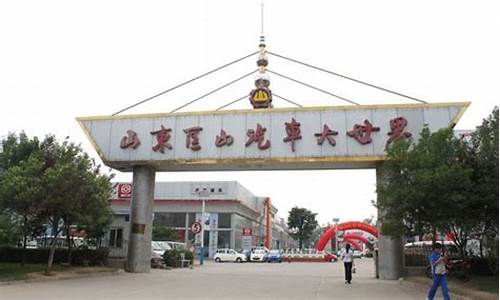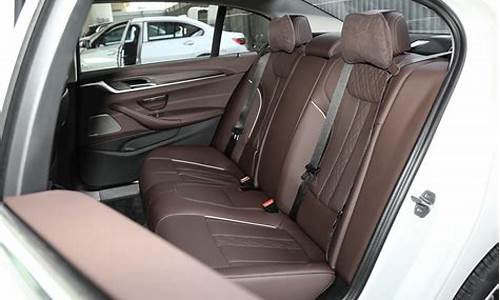ats 208
ats 208是一个非常重要的话题,可以从不同的角度进行思考和讨论。我愿意与您分享我的见解和经验。
1.关于曹操的外文资料
2.广汽讴歌怎么样?
3.遇到假冒轴承怎么办?
4.人们发现了118号元素后就停止了,是不是没有新元素了?
5.谁能我给详细解释一下有关数码单反相机镜头的数据知识

关于曹操的外文资料
Cáo Cāo
This article is about the person. For the song, see Cao Cao (song).
Portrait of Cao Cao by unknown artist
Names
Simplified Chinese: 曹操
Traditional Chinese: 曹操
Pinyin: Cáo Cāo
Wade-Giles: Ts'ao Ts'ao
Zi: Mengde (孟德)
Infant name: A-Man (阿瞒)
Temple Name: Wudi (武帝) or Taizu (太祖)
Posthumous name: Wu (武)
Cáo Cāo (曹操; Pinyin: Cáo Cāo; wg Ts'ao Ts'ao) (155 – March 15, 220), whose name is also often transliterated and should be correctly pronounced as Ts'ao Ts'ao, was a regional warlord and the last Chancellor of Eastern Han Dynasty who rose to great power during the last years of the Eastern Han Dynasty in ancient China. As one of the central figures of the Three Kingdoms period, he laid down foundations for what was to become the Kingdom of Wei (also known as Cáo Wèi) and was posthumously titled Emperor Wu of Wei (魏武帝). Although generally characterized as a cruel and suspicious character in the Romance of the Three Kingdoms and other folk cultures, the historic Cao Cao was a brilliant ruler, military strategist and poet.
Life
Early life
Cao Cao was born in the county of Qiao (谯, present day Bozhou, Anhui) in 155. His father Cao Song (曹嵩) was a foster son of Cao Teng (曹腾), who in turn was one of the favorite eunuchs of Emperor Huan. Some historical records, including Biography of Cao Man, claim that Cao Song was originally surnamed Xiahou (thus making Cao Cao a cousin of Xiahou Dun and Xiahou Yuan, two of his most prominent generals). In Romance of the Three Kingdoms , it states that Cao Cao's father was originally a Xiahou and was adopted into the Cao family.
Cao Cao was known for his craftiness as a young man. Cao Cao's uncle often complained to Cao Song regarding Cao Cao's childhood indulgence in hunting and music. To counter this, Cao Cao one day feigned a fit before his uncle, who hurriedly informed Cao Song. Cao Song rushed out to see his son, who was by then back to normal. When asked, Cao Cao replied, "I have never had such illness, but I lost the love of my uncle, and therefore he had deceived you." Henceforth, Cao Song ceased to believe the words of his brother regarding Cao Cao, and thus Cao Cao became even more blatant in his wayward pursuits.
At that time, there was a man living in Runan (汝南) named Xu Shao (许劭) who was famed for his ability to identify hidden talents of others. Cao Cao paid him a visit. Under persistent questioning, Xu Shao finally said, "You would be a capable minister in peaceful times and an unscrupulous hero in chaotic ones." Cao Cao took this as a compliment and was very pleased.
At twenty, Cao Cao was recommended to be a district captain of Luoyang. Upon taking up the post, Cao Cao placed rows of multicolored staffs outside his office and ordered his deputies to flog those who violated the law, regardless of their status. An uncle of Jian Shuo, an influential eunuch under Emperor Ling, was once caught walking in the city beyond the curfew hour by Cao Cao and given his fair share of flogging.
When the Yellow Turban Rebellion broke out in 184 Cao Cao was promoted to a captain of the cavalry (骑都尉) and sent to Yingchuan (颍川) to put down the rebels there. He was successful in his military exploits and was further promoted to Governor of Dong Commandery (东郡).
Alliance against Dong Zhuo
In 189, Emperor Ling died and was succeeded by his eldest son, though it was the empress dowager and the eunuchs who held true power. The two most powerful generals of that time, He Jin and Yuan Shao, plotted to eliminate the clan of influential eunuchs. He Jin summoned Dong Zhuo, governor of Liangzhou (凉州), to lead his army into the capital Luoyang to lay pressure on the empress dowager. Before Dong Zhuo arrived, however, He Jin was assassinated by the eunuchs and Luoyang fell into chaos. After his force ridded the palace ground of opposition, Dong Zhuo deposed the emperor and placed in the throne the puppet Emperor Xian.
Not seeing eye to eye with Dong Zhuo, Cao Cao left Luoyang for Chenliu (陈留, southeast of present day Kaifeng, Henan), where he raised his own troops. The next year, regional warlords combined their forces under Yuan Shao against Dong Zhuo. Cao Cao joined their cause. When Dong Zhuo was eventually killed in 192 by his own foster son, mighty warrior Lü Bu, China fell into civil war. Through short-term and regional-scale wars, Cao Cao continued to expand his power.
In 196, Cao Cao convinced Emperor Xian to move the capital to Xuchang, into the warlord's custody. Henceforth, the last emperor of Han remained mostly a figurehead in the hands of Cao Cao. Cao Cao was then instated as the General-in-Chief (大将军) and Marquis of Wuping (武平侯), though both titles had little practical implication.
In 200, Yuan Shao amassed more than 100,000 troops and marched southwards on Xuchang in the name of rescuing the emperor. Cao Cao gathered 20,000 men in Guandu, a strategic point on the shore of the Yellow River. With his craft, brilliant military maneuvers and the help of a defector from Yuan Shao's camp, Cao Cao won a decisive and seemingly impossible victory.
Yuan Shao fell ill and died shortly after returning from the defeat, leaving his legacy to two of his sons – the eldest son, Yuan Tan and the youngest son, Yuan Shang (袁尚). As he had designated the youngest son, Yuan Shang, as his successor, rather than the eldest as tradition dictated, the two brothers consistently feuded against each other, as they fought Cao Cao. Because of their internal divisions, Cao Cao was easily able to defeat them by using their differences to his advantage. Henceforth Cao Cao assumed effective rule over all of northern China. He sent armies further out and extended his control past the Great Wall into northern Korea, and southward to the Han River.
However, Cao Cao's attempt to extend his domination south of the Yangtze River was dashed as his forces were defeated by the first coalition of his archrivals Liu Bei and Sun Quan (who later founded the kingdoms of Shu and Wu respectively) at the Red Cliffs in 208.
Summary of major events
155 Born in Qiao.
180s Led troops against Yellow Turban Rebellion in Yingchuan.
190 Joined the coalition against Dong Zhuo.
196 Received Emperor Xian in Xuchang.
200 Won the Battle of Guandu.
208 Lost the Battle of Red Cliffs.
213 Created the Duke of Wei and given ten commanderies as his dukedom.
216 Conferred the title of the Prince/King of Wei.
220 Died in Luoyang.
Throned posthumously as Emperor Wu.
The three kingdoms
In 213, Cao Cao was titled Duke of Wei (魏公), given the Nine Dignities and given a fief of ten cities under his domain, known as the State of Wei. In 216, Cao Cao was promoted to Prince/King of Wei (魏王). Over the years, Cao Cao, as well as Liu Bei and Sun Quan, continued to consolidate their power in their respective regions. Through many wars, China became divided into three powers – Wei, Shu and Wu, which fought sporadic battles among themselves without the balance tipping significantly in anyone's favor.
In 220, Cao Cao passed away in Luoyang at the age of 65, without realizing his ambition to unify China. His will instructed that he be buried in everyday clothes and without burial artifacts, and that his subjects on duty at the frontier to stay in their posts and not attend the funeral as, in his own words, "the country is still unstable".
His eldest surviving son Cao Pi succeeded him. Within a year, Cao Pi forced Emperor Xian to abdicate and proclaimed himself the first emperor of the Kingdom of Wei. Cao Cao was then posthumously titled Emperor Wu.
Major battles
Battle of Yanzhou
In 193, China fell into a state of full-fledged civil war. Meanwhile, remnants of the Yellow Turban rebels still plagued the country. A wandering throng of the rebels from the Jingzhou (青州) numbering a million invaded the Yanzhou (兖州). Bao Xin (鲍信), a subject of Yanzhou governor Liu Dai (刘岱), advised the latter to fortify the city and wait for the enemies to disperse. Liu Dai refused and was subsequently killed in battle.
Bao Xin then offered Cao Cao the governor's seat in exchange for his help. In the initial encounter, Cao Cao suffered minor losses but eventually subdued the rebel force. He also took in more than 300,000 surrendered troops under his own flag. This force, which came to be known as the Qingzhou Army, was to be an important foundation for Cao Cao's subsequent rise to power.
Battle of Guandu
Main article: Battle of Guandu
In the spring of 200, Yuan Shao (袁绍), the most powerful warlord of the north, amassed more than 100,000 troops and marched from Ye on Xuchang. To defend against the invasion, Cao Cao placed 20,000 men at Guandu (官渡), a strategic landing point on the shore of the Yellow River which Yuan Shao's troops had to secure en route Xuchang.
With a few diversionary tactics, Cao Cao managed to disorient Yuan Shao's troops as well as kill two of Yuan Shao's most capable generals, Yan Liang and Wen Chou. The morale of Yuan Shao's troops suffered a further blow when Cao Cao launched a stealth attack on the former's food store, Wu Chao. Many more of Yuan Shao's men surrendered or deserted than were killed during the ensuing battle. When Yuan Shao eventually retreated back to Ye in the winter of 201, he did so with little more than 800 light cavalry.
The Battle of Guandu shifted the balance of power in northern China. Yuan Shao (袁绍) died shortly after his retreat and his two sons were soon defeated by Cao Cao further in the northern regions of Liaodong (辽东). Since then, Cao Cao's dominance in the entirety of northern China was never seriously challenged. The battle has also been studied by military strategists ever since as a classic example of winning against an enemy with far superior numbers.
Traditional site of the Red Cliffs, north of Wulin
Battle of Red Cliffs
Main article: Battle of Chibi
The Battle of Chibi (literally, "Red Cliffs") was another classic battle where the vastly outnumbered emerged as victor through strategy. In this battle, however, Cao Cao was on the losing end.
In the winter of 208, Liu Bei and Sun Quan – two warlords who later founded the kingdoms of Shu and Wu respectively – formed their first coalition against the southward expansion of Cao Cao. The two sides clashed at the Red Cliffs (northwest of present day Puqi, Hubei). Cao Cao boasted 830,000 men (historians believe the realistic number was around 220,000), while the Liu-Sun coalition at best had 50,000 troops.
However, Cao Cao's men, mostly from the north, were ill-suited to the southern climate and naval warfare, and thus entered the battle with a disadvantage. Furthermore, a plague that broke out undermined the strength of Cao Cao's army. The decision by Zhuge Liang and Zhou Yu, military advisors to Liu and Sun, to use fire also worked effectively against Cao Cao's vessels, which were chained together and thus allowed the fires to quickly spread. A majority of Cao Cao's troops were either burnt to death or drowned. Those who tried to retreat to the near bank were ambushed and annihilated by enemy skirmishers. Cao Cao himself barely escaped the encounter.
Other contributions
Agriculture and education
While waging military campaigns against his enemies, Cao Cao did not forget the basis of society – agriculture and education.
In 194, a locust plague caused a major famine across China. According to the Chronicle of the Three Kingdoms, the people ate each other out of desperation. Without food, many armies were defeated even without fighting. From this experience, Cao Cao saw the importance of an ample food supply in building a strong military. He began a series of agricultural programs in cities such as Xuchang and Chenliu. Refugees were recruited and given wastelands to cultivate. Later, encampments not faced with imminent danger of war were also made to farm. This system was continued and spread to all regions under Cao Cao as his realm expanded. Although Cao Cao's primary intention was to build a powerful army, the agricultural program also improved the living standards of the people, especially war refugees.
By 203, Cao Cao had eliminated most of Yuan Shao's force. This afforded him more attention on the constructional works within his realm. In autumn of that year, Cao Cao passed an order decreeing the promotion of education throughout the counties and cities within his jurisdiction. An official in charge of education matters was assigned to each county with at least 500 households. Youngsters with potential and talents were selected to undergo schooling. This prevented a lapse in the output of intellectuals in those warring years and, in Cao Cao's words, would benefit the people.
Poetry
Cao Cao was also an established poet. Although few of his works remain today, his verses, unpretentious yet profound, contributed to reshaping the poetry style of his time. Together with his sons Cao Pi and Cao Zhi, they are collectively known as the "Three Cao" in poetry. Along with several other poets of the time, their poems formed the backbone of what was to be known as the jian'an style (建安风骨; jian'an is the era name for the period from 196 to 220).
The civil strife towards the end of the Eastern Han Dynasty gave the jian'an poems their characteristic solemn yet heart-stirring tone, which frequently lament over the ephemerality of life. In the history of Chinese literature, the jian'an poems were a transition from the early folksongs into scholarly poetry.
One of Cao Cao's most celebrated poems, written in the late years of his life, is Though the Tortoise Lives Long (龟虽寿).Cao Cao in Romance of the Three Kingdoms
The Romance of the Three Kingdoms, a historical novel by Luo Guanzhong, was a romanticization of the events that occurred during the Three Kingdoms period. While staying true to history most of the time, the Romance of the Three Kingdoms inevitably gave Cao Cao a certain degree of dramatic make-up, in such a tone so as to suggest him as a cruel and suspicious character. On several occasions, Luo Guanzhong even made up fictional or semi-fictional events involving Cao Cao. These include:
Cao Cao in the 84-episode television serial Romance of the Three Kingdoms played by Bao Guo'an
Escape from Dong Zhuo
While in reality Cao Cao did leave Dong Zhuo, the tyrannical warlord who held the last Han emperor hostage in 190 to form his own army, the Romance of the Three Kingdoms went a step further to describe Cao Cao's attempted assassination of the latter:
Since Dong Zhuo deposed the eldest son of the late Emperor Ling and placed in the throne Emperor Xian, his tyrannical behavior had angered many court officials. One of the officials, Wang Yun, held a banquet one night. Halfway through the banquet, Wang Yun began to cry at the cruel deeds of Dong Zhuo. His colleagues, feeling the same anguish, joined him.
Cao Cao, however, laughed and said, "All the officials of the court – crying from dusk till dawn and dawn till dusk – could you cry Dong Zhuo to his death?" He then borrowed from Wang Yun the Seven Gem Sword with the promise that he would personally assassinate Dong Zhuo.
The next day, Cao Cao brought the precious sword along to see Dong Zhuo. Having much trust in Cao Cao, Dong Zhuo received the guest in his bedroom. Lü Bu, Dong Zhuo's foster son, left the room for the stable to select a fast horse for Cao Cao, who complained about his slow ride.
When Dong Zhuo faced away, Cao Cao prepared to unsheath the sword. However, Dong Zhuo saw the movement in the mirror and hastily turned to question Cao Cao's intention. At this time, Lü Bu had also returned. In his desperation, Cao Cao knelt and pretended that he wanted to present the sword to Dong Zhuo. He then rode away with the excuse of trying out the new horse, and headed straight out of the capital before Dong Zhuo, who grew heavily suspicious, could capture him.
Portrait of Cao Cao from a Qing Dynasty edition of the Romance of the Three Kingdoms, the hunched figure clearly portraying him as a villain
Escape through Huarong Trail
After the fire started burning at the Red Cliffs, Cao Cao gathered all the men he could and escaped towards Jiangling, taking the shortcut through Huarong Trail. On top of the huge defeat and humiliation Cao Cao suffered, Luo Guanzhong decided to add one more pinch of salt to the getaway:
During his perilous escape back to Jiangling, Cao Cao came to a fork in the road. Columns of smoke were seen rising from the narrower path. Cao Cao judged that the smoke was a trick by the enemy to divert him to the main road, where an ambush must have been laid. He then led his men towards the narrow path – the Huarong Trail.
The smoke was indeed a trick by Zhuge Liang, military advisor to Liu Bei. Grasping Cao Cao's psychology exactly, however, Zhuge Liang actually meant to direct him to Huarong Trail, where Guan Yu with 500 troops sat waiting. Upon being cut off, Cao Cao rode forward and pled to Guan Yu to remember kindness of the former days. Seeing the plight of the defeated men and recalling the former favors he received from Cao Cao, Guan Yu then allowed the enemy to pass through without challenge, risking his own life for disobeying military orders.
However, in real history, Cao Cao escaped through a muddy road, with a lot of shrubs around. Shortly after he escaped, Liu Bei's troops then came to the road and set fire to it. Cao Cao therefore teased him as "clever, but a little slow".
Death of Cao Cao and Hua Tuo
In 220, Cao Cao passed away in Luoyang due to an unrecorded illness. Legends had many explanations for the cause of his death, most of which were wrought with superstitions. The Romance of the Three Kingdoms included some of these legends, as well as Luo Guanzhong's own story about the involvement of Hua Tuo, a renowned Chinese physician.
When Cao Cao started complaining about splitting headaches during the last days of his life, his subjects recommended Hua Tuo, a physician whose skills were said to parallel the deities. Upon examination, Hua Tuo diagnosed Cao Cao's illness to be a type of rheumatism within the skull. He suggested giving Cao Cao a dose of hashish and then splitting open his skull with a sharp axe to extract the pus within.
However, due to an earlier incident with another physician who attempted to take Cao Cao's life, Cao Cao grew very suspicious of any physician. Cao Cao believed Hua Tuo intended to kill him. He then threw Hua Tuo into jail, where the renowned physician died a few days later. Without proper treatment, Cao Cao soon died as well.
Cao Cao in opera
While historical records indicate Cao Cao as a brilliant ruler, he was represented as a cunning and deceitful man in Chinese opera, where the character of Cao Cao is given a white facial makeup to reflect his treacherous personality. When writing the Romance of the Three Kingdoms, Luo Guanzhong took much of his inspiration from the opera. As a result, such unscrupulous depiction of Cao Cao had become much more popular among the common people than the real Cao Cao himself.
广汽讴歌怎么样?
在IP层看来,通信的两端是两个主机,IP数据报的首部明确的标志了这两个主机的IP地址。但是两个主机之间的通信这种说法还不够清楚,这是因为真正进行通信的实体是在主机中的进程 ,是两个进程之间在交换数据。从而引出了运输层,从运输层的角度看来,通信的真正端点并不是主机而是主机中的进程 (端到端的通信)。在一个主机中经常有多个应用进程同时分别和另一个主机的多个应用进程通信。这就表明了运输层有一个很重要的功能,复用和分用 ,应用层不同进程的报文通过不同的端口向下交到运输层,再往下就共用网络层提供的服务。
“运输层提供应用进程间的逻辑通信”。“逻辑通信”的意思是:运输层之间的通信好像是沿水平方向传送数据。但事实上这两个运输层之间并没有一条水平方向的物理连接。
TCP/IP 的运输层有两个不同的协议:
由此可见两个计算机中的进程要相互通信,不仅要知道对方的IP地址,还要知道对方的端口号。
如果接收方UDP发现收到的报文中的目的端口号不正确(即不存在对应于该端口的号的应用进程),就丢弃该报文,并由网际控制报文协议ICMP发送端口不可达 差错报文给发送方。
在计算检验和时,临时把“伪首部” 和 UDP 用户数据报连接在一起得到一个临时的数据报,它不向下传递也不向上递交。伪首部仅仅是为了计算检验和 。
UDP计算检验和的方法和IP数据报首部检验和方法相类似。但不同的是,IP数据报的检验和只检验IP数据报的首部 ,但UDP的检验和是把首部和数据部分一起检验
计算UDP检验和的例子:
在发送方,先把全0放入检验和字段,再把伪首部以及UDP用户数据报看成是许多16位的字串接起来。若UDP用户报的数据部分不是偶数个字节,则要填入一个全零字节(先不发送)。然后按照二进制反码 计算出这些16位字的和。将此和的二进制反码写入检验和字段 后,就发送这样的UDP数据报。在接收方,把收到的UDP数据报连通伪首部(以及可能填充全零字节)一起,按二进制反码求这些16位字的和。当无差错时其结果应为全1(原本的检验和为0,封装成数据报后再次相加的时候就多个检验和反码相加,所以无差错时结果为1)。
每一条TCP连接唯一地被通信两端的两个端点(即两个套接字)所确定,即:
TCP发送的报文段是交给IP层传输的。但IP层只提供尽最大努力服务,也就是说,TCP下面的网络所提供的是不可靠传输,因此,TCP必须采用适当的措施才能使得两个运输层之间的通信变得可靠。
在这样的理想传输条件下,不需要采取任何措施就能够实现可靠传输。然而实际的网络都不具备以上两个理想的条件。但我们可以使用一些可靠传输协议,当出现差错时让发送方重传出现差错的数据,同时在接收方来不及处理收到的数据时,及时告诉发送方适当的降低发送数据的速度,这样一来,本来是不可靠的传输信道就能够实现可靠传输。
停止等待协议的优点是简单,但缺点是信道利用率 太低。
假定AB之间有一条直通的信道来传送分组
这里的TD是A发送分组所需要的时间(显然TD = 分组长度 / 数据速率)再假定TA是B发送确认分组所需要的时间(A和B处理分组的时间都忽略不计)那么A在经过TD+RTT+TA时间后才能发送下一个分组,这里的RTT是往返时间,因为只有TD是采用来传输有用的数据(这个数据包括了分组首部,如果可以知道传输更精确的数据的时间,可以计算的更精确),所有信道利用率为
为了提高传输效率,发送方可以不使用低效率的停止等待协议,而是采用流水线传输 :就是发送方可以连续的发送多个分组 ,不必每发完一个分组就停下来等待对方的确认。这样可使信道上一直有数据不间断地在传送。显然这种传输方式可以获得很高的信道利用率
当时使用流水线传输时,就要使用下面介绍的连续ARQ协议 和滑动窗口协议
滑动窗口协议比较复杂,是TCP协议的精髓所在,在这里先给出ARQ协议最基本的概念,但不涉及到许多细节问题。
位于发送窗口的分组都可以连续的发送出去,而不需要等待对方的确认,发送方每收到一个确认,就把发送窗口向前滑动一个分组的位置。
详细可以见P201
TCP虽然是面向字节流的,但是TCP传送的数据单元却是报文段(可以看上述TCP面向流的概念),而且TCP的全部功能都体现在它的首部中各个字段 。
详解请见P206,注意图中的后沿,前沿
从下图可以看出来,要描述一个发送窗口的状态需要三个指针:P1,P2,P3
有很多信息见P208,这里不赘述
发送方的应用进程把字节流写入TCP的发送缓存,接收方的应用进程从TCP的接收缓存中读取字节流。下面进一步讨论前面讲的窗口和缓存 的关系
发送缓存
发送窗口通常只是发送缓存的一部分,已被确认的数据应当从发送缓存中删除,因此发送缓存和发送窗口的后沿是重合 的。发送应用程序最后写入发送缓存的字节减去最后被确认的字节,就是还保留在发送缓存中被写入的字节。发送应用程序必须控制写入缓存的速率,不能太快 ,否则发送缓存就会没有存放数据的空间。
如果收到的分组被检测出有差错,则要丢弃。如果接收应用程序来不及读取收到的数据,接收缓存最终就会被填满,使接收窗口减少到零。反之,如果接收应用程序能够及时从接收缓存中读取收到的数据,接收窗口就可以增大,但最大不能超过接收缓存的大小。
TCP才用了一种自适应算法,它记录一个报文段发出的时间,以及收到相应的确认的时间。这两个时间之差就是报文段的往返时间RTT。
TCP 保留了 RTT 的一个加权平均往返时间 RTTs (这又称为平滑(smooth)的往返时间,因为是加权平均,所以是平滑的)。
第一次测量到 RTT 样本时,RTTS 值就取为所测量到的 RTT 样本值 。以后每测量到一个新的 RTT 样本,就按下式重新计算一次 RTTS:
显然,RTO 应略大于上面得出的加权平均往返时间 RTTs
RFC 2988 建议使用下式计算 RTO:
RTTD 是 RTT 的偏差的 加权平均值,他与RTTs和新的RTT样本之差有关。
RFC 2988 建议这样计算 RTTD。第一次测量时,RTTD 值取为测量到的 RTT 样本值的一半。在以后的测量中,则使用下式计算加权平均的 RTTD:
β是个小于 1 的系数,其推荐值是 1/4,即 0.25。
为了解决上面那个问题,Karn提出了一个算法
在计算平均往返时间 RTT 时,只要**报文段重传了,就不采用其往返时间样本。这样得出的加权平均平均往返时间 RTTS 和超时重传时间 RTO 就较准确。 **
但是,这又有了新的问题、设想出现这样的情况:报文段的时延突然增大了很多。因此在原来得出的重传时间内,不会收到确认报文段。于是就重传报文段。但根据Karn算法,不考虑重传的报文段的往返时间样本。这样,超时重传时间就无法更新。
报文段每重传一次,就把 RTO 增大一些:
系数 γ 的典型值是 2 。
当不再发生报文段的重传时,才根据报文段的往返时延更新平均往返时延 RTT 和超时重传时间 RTO 的数值。
实践证明,这种策略较为合理。
接收方收到了和前面的字节流 不连续 *的两个字节块(只是未按序号,它是无差错的)
如果这些字节的序号都在接收窗口之内,那么接收方就先收下这些数据,但要把这些信息准确地告诉发送方,使发送方不要再重复发送这些已收到的数据。
和前后字节不连续的每一个字节块都有两个边界:左边界和右边界。图中用四个指针标记这些边界。第一个字节块的左边界 L1 = 1501,但右边界 R1 = 3001。左边界指出字节块的第一个字节的序号,但右边界减 1 才是字节块中的最后一个序号。第二个字节块的左边界 L2 = 3501,而右边界 R2 = 4501。
详见P211
一般说来,我们总是希望数据传输得更快一些。但如果发送方把数据发送得过快,
接收方就可能来不及接收,这就会造成数据的丢失。
流量控制(flow control)就是让发送方的发送速率不要太快,既要让接收方来得及接收,也不要使网络发生拥塞 。
利用滑动窗口机制 可以很方便地在 TCP 连接上实现流量控制。
A 向 B 发送数据。在连接建立时,?B 告诉 A:“我的接收窗口 rwnd = 400(字节)”。看下TCP首部窗口字段的用处
接收方的主机B一共进行了3次流量控制(蓝线)
考虑一种情况,B向A发送了零窗口的报文段后不久,B的接收缓存又有了一些存储空间。于是B向A发送了rwnd = 400的报文段,然而这个报文段在传输过程中丢失了。A一直等收到B发送非零窗口的通知,B也一直等A发送数据来,就形成了死锁 。下面的持续计时器 就是为了打破死锁僵局的
应用进程把数据传送到TCP发送缓存后,剩下的发送任务就由TCP来控制了。可以用不同的机制来控制 TCP 报文段的发送时机:
至于如何控制发送的 时机 详见P213
在某段时间,若对网络中某资源的需求超过了该资源所能提供的可用部分,网络的性能就要变坏——产生拥塞(congestion)
出现资源拥塞的条件: 对资源需求的总和 > 可用资源
若网络中有许多资源同时产生拥塞,网络的性能就要明显变坏,整个网络的吞吐量将随输入负荷的增大而下降。
解决拥塞的要点是平衡 ,要让整个系统的性能想匹配(P214)。
横坐标为提供的负载 ,代表单位时间内输入给网络的分组的数目(也叫作输入负载或网络负载),纵坐标是吞吐量 ,代表单位时间内从网络输出的分组数目。
由于缺少缓存空间而被丢弃的分组的百分数,平均队列长度,超时重传的分组数,平均分组时延,分组时延的标准差等,这些指标的上升都标志着拥塞的增长。
方便起见,我们用报文段的个数 作为窗口大小的单位
慢开始门限 ssthresh 的用法如下:
拥塞避免算法的思路是让拥塞窗口 cwnd 缓慢地增大,即每经过一个往返时间 RTT 就把发送方的拥塞窗口 cwnd 加 1,而不是加倍,使拥塞窗口 cwnd 按线性规律缓慢增长 ,比慢开始算法的拥塞窗口增长速率缓慢很多。
网络出现拥塞时
当 TCP 连接进行初始化时,将拥塞窗口置为 1。图中的窗口单位不使用字节而使用报文段 。
慢开始门限的初始值设置为 16 个报文段,即 ssthresh = 16。
发送端的发送窗口不能超过拥塞窗口 cwnd 和接收端窗口 rwnd 中的最小值。我们假定接收端窗口足够大,因此现在发送窗口的数值等于拥塞窗口的数值。
下面的执行步骤就是按照折现上的点的顺序
遇到假冒轴承怎么办?
开门见山地问大家一个问题:如果在一杯来自北美牧场的鲜牛奶中加入一颗源自东瀛半岛的生食级鸡蛋,随后将它盛在中国商场B1层美食广场中随处可见的爆炸容量杯中,并冠以“新贵中产们的能量饮料”这一花名,售价定在27.99元,屏幕前的你会心甘情愿掏腰包吗?相信百分十九十五的消费者都会报以怀疑与观望的态度,这也是我初次见到广汽讴歌第二款国产车型、入门版车型起售价不超过28万的TLX-L时的第一反应。好在相比于身上“国产”元素来得十分猛烈的SUV车型CDX,轿车TLX在“讨好”中国消费者这件事上,并没有做得过于卑躬屈膝和曲意逢迎,拉长轴距,开出天窗,增加隔音材料,配上品牌音响、添些配置。总体上来说即便轴距达到了2900毫米,但这依旧是一台骨子里承载着本田基因的中级轿车。
TLX-L的外观不浪费篇幅,自行看图即可。内饰也无过多新意,维持了和老款TLX类似的设计和功能。在内饰部分,豪华车该有的品质TLX-L并不缺少,比如真皮和拉丝材质的大面积运用,车厢氛围档次的营造,按键的手感与旋钮的阻尼设置,触摸屏的反应和反馈也在同级中上水平。
内饰值得提升的部分主要包括以下两点:第一是不支持苹果Carplay和安卓手机连接。说到底Carplay完全不是中国消费者的刚需,因为大部分人在开车时都会用QQ音乐或网易云音乐通过蓝牙连接的方式享受音乐,用高德或百度地图来完成导航,苹果Carplay的作用其实微乎其微,但这就和在中国市场卖车一定要有天窗同理:我可以不用,但你不能没有。
第二是挡把前方的两层储物格设置,一个12V的点烟器和一个1.0A的USB充电口从数量上说完全过关,专为充电线留出的空槽也充满着巧思。但这个两层储物格对大屏幕手机的友好程度有待提高,实测苹果7和8不带保护套能放入,一旦带上保护套就会显得空间不足(很明显讴歌在这点上还要再读懂国人一些,中国消费者有几个用手机不带保护套的?),而PLUS机型及更大的屏幕的手机(比如华为Mate9)就置入无能了,也没办法将手机放在光滑的储物格盖板上,这样在行驶过程中很容易造成手机来回滑动影响安全。
当然,除去以上两点,国产TLX-L的前排内饰可以毫无压力地在目前国内市场在售的豪华中型车中排进前三甲,真皮方向盘的手感、座椅的包裹和支撑度,储物空间的设置以及副驾驶手套箱内的小心思都让我看到了日系品牌该有的熨帖,也找到ABB之外更多直指人心的细节。
外观和前排看过后,下面才是国产TLX-L的重点——加长125毫米的后排和作为一台豪华品牌的动态驾驶表现。
因为加长的数值全部被放置在B柱之后,所以TLX-L的后排在腿部空间上无需担心。我并不想用几拳来展现膝盖前的巨大鸿沟,因为这样会暴露自己的身高。对于正常身材的成年男性来说,TLX-L的第二排可以自由自在地翘起二郎腿,同样也可以横躺下去不被卡住,类似的经历在广汽本田冠道的后排曾经发生过一次。TLX-L是细分市场里我所体验过车型中,后排空间最阔绰的中级车之一。
单有充足的空间不足为奇,也无法打动口味挑剔的国内消费者,正如未曾装修过的毛坯房很难卖出高价。TLX-L在第二排配置的设置上,让我这个很少主动交出驾驶权的人脑中冒出了放下方向盘的奇特想法。厚实到变态的座椅,造型与支撑感同样复杂,高舒适度的臀感从接触到座椅的第一秒开始迅速蔓延至脊背,顺势向后躺下,肩膀与颈部也得到完整的照顾。后窗与侧窗遮阳帘,座椅加热和开启关闭天窗的按钮时刻提醒着我:前排是操控行车的路线的人,后排才是掌控整车的王者。
后排扶手箱上的多媒体控制系统简单实用,典型的“Honda”式风格和菜单设置,蓝色的背景和白色的字体很容易让人产生亲近感,即便是第一次上手的后排尊贵人士。科技感的确不太多,但胜在Chic与实用兼顾。扶手箱内的两个2.5A USB充电口满足基本需求无忧。右侧门板上的“老板键”使用频率不会太高,所以只在高配车型上出现,这里不做过多解读。
静态的TLX-L给我留下的印象是它为中国购车者做了“太多”的适配性调整,从未在美国市场出现过的超长轴距和大尺寸天窗以及一系列针对后排进行增加的配置都让我内心充满了担忧:这台TLX-L会不会在驾驶上也向并不注重动态的国内消费者低头呢?
答案是NO。
首先,最大功率208马力、峰值扭矩247牛米的2.4升K24系列本田地球梦自然吸气发动机无人不知,滑度接近满分的动力输出曲线和秉承VTEC精神的高转速出力区间让它成为了TLX-L的唯一能量来源。带液力变矩器的8挡双离合器变速箱也是熟面孔,它在手自一体变速箱所擅长的蠕行和低速换挡部分和双离合器变速箱所擅长的高效换挡逻辑与速率间找到了平衡。
实际驾驶表现来看,前3挡的升降挡平顺性与手自一体变速箱表现极为接近,对双离合器变速箱所预设的“顿挫”观点并没有在TLX-L上出现,自然吸气发动机的出力曲线在8挡双离合器变速箱的梳理下放下了内心的狂躁与骄纵,在脚底油门踏板的作用下缓缓释出,一曲每个音符都被完美演绎的机械匹配交响乐在我耳畔渐渐拉开大幕。
车速逐渐上升,8挡双离合器变速箱的升挡动作也很是积极,尤其在经济巡航和标准驾驶模式下,这台变速箱会尽其所能在低车速的情况下升到最高挡位,借此来换取更有效率的燃油经济性。这两种模式下的油门响应也会有所滞后,换挡转速被严苛地压在了2000转/分,巡航转速被克制在了1600转/分左右,半毫都不得超过。
转向手感的建立在这两种驾驶模式下差距很小,低速的轻盈与高速的实在相得益彰,随车速递增的转向曲线没有发生太多改变,满足日常使用绰绰有余。
但如果只把模式放在这两种上,很遗憾你错过了一台有可能是这个级别里最具有驾驶乐趣的中级车,也没有办法百分之百体会到一台本田轿车原本的模样。我自然不会错过这个机会,抓住一个开出收费站的短暂时机,我按下了挡把后侧的驾驶模式转换按钮。
几乎是模式转换完成的瞬间,收到圣旨的TLX-L即刻收起了此前刻意营造的商务模样,褪下高定西装和袖钉,让穿在内里的安德玛塑身衣开始发挥功用——是时候真刀真枪了!
在运动模式下,一切与驾驶有关的因子开始躁动不安,发动机慢慢拉高嗓音,悦耳的气缸完成行程之歌随着油门的逐渐深入奏起第一个音符。车轮转动的第一圈,我内心开始泛起碳酸饮料初开盖时的细小气泡,等驾驶里程积累到50公里时,我的内心已然是沸腾无边的滚水。
找到了,在运动模式下,我找到了TLX-L打动内心的punchline,它的换挡不再是标准模式里被压抑的野兽,而是直接将转速拉升至3000转/分以上,时机也不再为省油而牵制,踩下油门踏板的即刻,车速开始极速上升,在电光火石间,已经达到了深圳的限速上限。我能明显感觉到座下TLX-L的兴奋点在不断被激发,它渴望碾过道路,渴望撕开空气的绞杀。如果不是道路速度限制,我非常愿意将它推向速度指针的顶点,也希望能和它在弯角里找到推与不推的边缘。
短暂的欢愉高潮后,我还是将驾驶模式拨回了标准,运动固然好,(其实运动+自由度更高,道路完全不是它施展的舞台),但肾上腺素迸发时是无法检验NVH水平的。好在标准模式下开个10公里,内心就会在很难相信是日系车的NVH水准中迅速逐渐平和下来,其实这一句就已经总结了TLX-L作为豪华车的隔音和滤振表现,相信聪明如你一定读得懂。
总结下TLX-L的动态表现,那即是“偷心的双面间谍”,在巡航和标准模式下,TLX-L是性格稳定,内心波澜不惊的成熟男子,适合长途旅行,适合日常通勤,也适合昼夜相伴;运动模式下,TLX-L分裂为娇态丛生的欲望“原罪”,ATS-L也好,Q50L也罢,都只有看尾灯闪耀的份儿。许多并未开过的云车评家们将TLX-L称为“思铂睿王”,正如他们叫CDX是“缤智王”一样,我无法苟同:思铂睿和缤智都是家用车的典范,但TLX-L和CDX则是豪华的代言,两者间存在的不仅仅是售价的区别,更是研发思路上的本质差距。
加长轴距会丢失掉驾驶本性吗?开了大天窗会让更多的人进店试乘吗?配置一股脑地加上去能让消费者感受到诚意吗?各种英文字母列一大堆的黑科技会换来更佳的口碑吗?摆在TLX-L前有关市场、营销和消费者的疑问还有很多,但好在TLX-L本身的产品力不需要质疑,即便它的内装存在一些需要与时俱进的部分,即便它因为时间紧迫没能享受到2.0T+10AT的动力总成,即便顶配车型的售价超过30万是板上钉钉,但这一切都不妨碍TLX-L成为一台备受驾驶者青睐的好车,也不妨碍它跻身ABB之外值得考量购买的车型列表中。
人们发现了118号元素后就停止了,是不是没有新元素了?
一、解决方法:
可以到工商局举报,如果造成损失可以通过法律手段,造价师经销商的责任。
二、辨别轴承真伪的方法:
1、外包装是否明晰:一般情况下,正厂品牌都有自己专门的设计人员对外包装进行设计,并且安排生产条件过关的工厂进行制作生产,因此包装无论从线条到色块都非常清晰,毫含糊。
2、钢印字是否清晰:在轴承体上会印有品牌字样、标号等。字体非常小,但是正厂出品大都使用钢印技术,而且在未经过热处理之前就进行压字,因此字体虽然小,但是凹得深,非常清晰。而仿冒产品的字体非但模糊,由于印字技术粗糙,字体浮于表面,有些甚至轻易地就可以用手抹去。
3、是否有杂响:左手握住轴承体内套,右手拨动外套使其旋转,听其是否有杂响。由于大部分仿冒产品的生产条件落后,完全手工作坊式操作,在生产过程中难免会掺进沙子一类的杂质,藏在轴承体内,所以在旋转的时候会发出杂响。这是和严格执行生产标准、并且用机器操作的正厂品牌之间最大的不同。
4、表面是否有浑浊的油迹:这在购买进口轴承时应该特别注意。由于国内目前的防锈技术还不是特别到家,所以对轴承体进行防锈处理时很容易留下厚厚的油迹,拿在手上粘粘稠稠,而国外原装进口的轴承上几乎看不到防锈油的痕迹,倒是特别细心的行家说进口轴承闻起来有一种味道,肯定是下了防锈油,只是看不到而已。
5、倒角是否均匀:所谓轴承的倒角,也就是横面与竖面的交接处,仿冒的轴承由于生产技术的限制,在这些边边角角的部位处理得不尽人意。
谁能我给详细解释一下有关数码单反相机镜头的数据知识
现代的元素周期表已经不再按照原子量由轻到重来排列,而是按照原子序数(即是原子核内质子数目的多少)来排列。人类已经能够从微观的角度,根据每个元素原子核内的质子数、中子数、外层电子的层数和最外层电子数的多少等原子的内在基本规律来正确地解释周期表中各元素及其化合物性质的周期变化的趋势。可以说,元素周期表的内在规律体现了宇宙的某些基本规律。2016年科学家们用钙离子轰击锎原子制造了元素周期表上的118号元素,之后四年人类再也没有发现新的元素。
科学家想用同样的方式,用“锿”作为标靶来得到119号元素。但是现在世界上并没有足够的锿来完成这个实验,而且这些巨大的元素因为原子量太大,不能保持稳定的存在。
现在119号元素是被科学家假设存在的一种元素。119号元素被假设称为类钫,符号Uue,原子序数119。在元素周期表中,它有望成为一个s区元素,碱金属,并成为第八周期的第一个元素。
119号元素由于是尚未合成的元素,美国、德国和俄罗斯的团队多次尝试想合成这一元素,结果他们都失败了。这说明,合成119号元素将比以前的元素要困难得多,甚至119号元素可能是技术可以合成最后的两个元素之一(另一个是120号元素)。
核物理学家提出一种稳定岛的理论推测,认为具有“幻数”数目的质子和中子的原子核的化学元素特别稳定。目前元素周期表中已经发现的幻数有2(氦)、8(氧)、20(钙)、28(镍)、50(锡)、82(铅),这些都是比较稳定的元素,这是一个非常有趣的事实。由此可以推测出下一个具有“幻数”的理论稳定元素是126号元素。由于稳定岛理论预言了126号元素是稳定存在的,所以科学家都在想法设法的制造126号元素,但迄今为止,还未能再前进一步,和预言中的119和120号元素一样还仅仅存在假设理论中!
无论119号元素、120号元素以及126号元素是否发现,人类为了认识事物的本质,以及了解宇宙的规律所做的努力和思考从来就没停止过,总有一天,会有新元素诞生的。
众所周知,普通变焦镜头的光圈环上总是标有两组数据,这是什么意思呢?初学者经常问到这个问题。它其实是向你表明:该镜头的光圈会随着焦距的变化而相应变化,如AF变焦尼克尔1:4.5-5.6/80-200mmD镜头,也就是说此镜头如果我们保持最大光圈4.5时,在80mm为F4.5,随着焦距的增加,光圈实际上逐渐发生变化,到200mm端时,虽然光圈值仍然设在F4.5的刻度上,但实际光圈却悄然地变成了F5.6,这就是所谓的“光圈浮动”,因此普通变焦镜头也叫“浮动光圈镜头”。 再如我们以70-210mm/F4.5-5.6变焦镜头为例,当你用F8光圈在70mm端用A档手持拍摄时,假定快门速度为1/125秒,根据快门速度与焦距的原理,则不存在“手震”的负面影响,你能够拍摄到很清晰的照片,但当你把将焦距推至到210mm端时,而且在光线不变的情况下,那么此时光圈会“自动”地变为F11,相机也就会根据镜头通光量变化而自动地将快门速度改变至1/60秒,这时就开始有点小问题了,如果你仍然手持拍摄必然会产生因“手震”带来的负面影响,结果就是难以拍摄到清晰的(实际需要1/250秒以上的速度才能克服“手震”影响,或者使用脚架等稳定相机),有许多人看着一大堆模糊的照片,无比悲愤地认定自己使用的变焦镜头是“狗头或烂头”,被镜头制造厂家的廉价镜头给骗了,这中间确实存在着一种对镜头生产厂家的误解,是一些摄友对浮动光圈镜头会“自动浮动”的这个天生的特点不了解的一种误解,也是一些摄友在使用浮动光圈变焦镜头后,经常会出现照片效果不理想或片子糊了的根本原因,因此浮动光圈镜头有一个很出名的雅号:叫“无声杀手”,它会无声无息地谋杀你的胶卷或画面效果。
浮动光圈镜头所以要这样设计,主要目的是为了减轻透镜的直径、重量和降低制造成本,但浮动光圈镜头的最大的缺点就是:你必须要忍受随着焦距的变长镜头光圈口径也跟随着下降的痛苦、在低照度光线下不能手持拍摄、不得不使用高感光度胶卷、景深变化等等的痛苦,因此一些发烧友有了银子就总想烧一烧定焦镜头或恒定光圈变焦镜头,这是有一定道理的。
光圈的相对口径也可称为焦强,即镜头允许光线进入的能力,指镜头上的光孔。光孔越大,光就进来得越多,所需曝光时间就越短,因相机抖动对清晰度的影响就越小。即使在光线较弱时,光孔大的镜头也能拍摄(如F1.2、1.4、2、2.8等),而在使用光孔较小的镜头时就很难拍摄了(如F4.5以上)。
光圈口径大小对所需要的透镜直径影响非常大。焦距短时,透镜离胶片层距离很近,光线能量损失很少,小直径光孔就足够了。焦距长时,一方面光进入路径长,另一方面长焦距取景的范围小,光线能量损失也大。
如果想让同样量的光线到达胶片,光孔直径就应必须相应地增大。基本公式是:在焦强(光圈)不变的情况下,焦距增加一倍其透镜直径也必须增加一倍。如100mm焦距的镜头想与普通标准50mm焦距镜头一样的达到F2.8,光孔直径就是普通标准镜头的2倍,200mm镜头的直径则必须是普通标准镜头的4倍,400mm镜头的直径就是必须是标准镜头的8倍,这就是为什么同样相对孔径的长焦镜头的透镜直径必须比广角镜头大上几倍的根本原因所在,也是制造恒定光圈变焦镜头的主要原理所在。
恒定光圈变焦镜头也可称之为无级变焦镜头,其设计要求很高,镜头可调节的最大焦距决定了透镜直径。如果想造1:2.8/28-200mm的恒定光圈变焦镜头,那就需要在200mm能时能把与1:2.8相对的光线能量带到胶片层或感光层上,也就决定了必须采取大孔径透镜来保持高焦强,但采用大孔径的透镜又带来了像差的质量下降,为控制像差的质量,既采取高焦强又保持高质量的成像效果,在相反焦距(下端广角,上端长焦)时的像差控制要求精度很高,必须找到其最佳平衡点。这样一来,设计上所需要的光学系统变得庞大而复杂,透镜的制造成本必然大大增加,曾经有许多人提出制造一种质量顶级的“一镜走天下”镜头,很久以来就不断有人提出能不能制造出一款18—200mm焦距,f1.4恒定光圈并具备防抖及1:1微距功能的镜头?我想这是犯了一个常识性的错误,从世界上照相机镜头制造厂家目前和将来很长时间内的镜片制造技术趋势来讲,可以说这是一个我们根本无法达到的一个美丽幻想,这并非制造厂商有能力制造但为了追求利润的最大化而故意不制造出来,如果真是这样,那么为了本国的国家利益比如军工产品上就完全可以制造出来,其实各镜头制造厂商是非常乐意把他们能够达到的制造镜头最高技术水平展示于人,如尼康号称“鹰之眼”的镇宝之物AI 58mm/F1.2;佳能的50mm/F1.0,都是照相机镜头制造历史上的极端例子,但为什么至今仍然没能制造出18mm到200mm焦距且F1.4的恒定光圈镜头呢?这是由于制造技术上巨大困难和障碍的难以逾越,难在何处?难就难在要求从18mm至200mm始终都要保持在1.4的高焦强上,先且不说透镜因这样的技术标准要求而变得有多复杂,单从透镜的直径达到和超过208mm就吓死人,如果再加上镜头的外径将达到近350mm以上,你可以试想:有谁能扛得动这超级重量的镜头,目前世界上什么相机的机身的卡口能锁定它?真的制造出来了,它那天文数字般售价谁能承受得起?
这样的超级镜头只有一种例外,一些世界上大型的天文望远镜和著名的哈勃望远镜能够不惜成本,确实已经达到这样的制造技术指标。但它的外观是极其庞大而复杂的,其制造成本也是以亿为单位的美元堆起来的。
因此恒定光圈与浮动光圈镜头在价格上、体积上和重量上的差异如此之大就不难理解了。就以定焦标准镜头为例,F1.2、F1.4和F1.8在售价上往往相差几倍,其根本原因不在于增大了半级光圈,而在于光圈越大透镜的直径就必然越大,随着透镜直径的增大,其制造难度的增加和制造成本的必然大大地增加。
为什么越是大光圈的定焦镜头和长焦恒定大光圈镜头,其重量也越重?这并不是制造厂家想有意这样做,实际上如何减轻镜头的重量一直是制造商长期努力的方向,但由于上述原因的存在和技术上难度,其减轻重量一直是非常难以解决的一件事情。
了解了上述原理后,你自然就知道定焦镜头和恒定光圈镜头在实际运用中的好处了,简单地讲与普通变焦镜头相比,定焦和恒定焦镜头至少有以下几点优势:
1、定焦镜头、恒定光圈镜头无论在任何一个焦段上,都可以保持稳定的焦强和景深,保持相对的快门速度,尤其是室内或在恶劣的昏暗光线条件下,当浮动镜头变得难以手持拍摄时而不得不使用三脚架时,定焦和恒定焦镜头还能够保持手持拍摄;
2、定焦镜头与恒定光圈镜头便于景深的自由运用,特别是恒定光圈镜头,不会像浮动镜头那样,因焦距的变化而带来光圈的变化再带来景深的变化;
3、定焦镜头与恒定光圈镜头能够保持和使用较高的快门速度,这在拍摄现场光下的动态物体或在使用长焦镜头时具有决定性的意义。试想:如果你在拍摄舞台照片或黄昏归鸟时,如果在黑夜中偷拍一个精彩的记实场景时,都是绝对不允许打亮闪光灯的,这时你如果没有一支高质量的定焦镜头或恒定大光圈变焦镜头,我估计拍摄出来的一大堆照片基本上可以直接丢进你的垃圾桶里、或直接批处理删除掉。
4、在测光上的便利性,当然这已经算不上是什么优点了,因为现在无论是定焦或变焦镜头,现代相机内的测光技术都能够根据光线的变化而自动调整测光量。但在老式相机上这确实是一个很大的优点。
当然,享受这些方便的代价就是付出的银子需要大大地增加,变焦镜头与恒定光圈镜头的差价一般都在几倍以上,有的甚至高达十倍以上,这是我等贫下中农们想都不要想的。
现在大家用得最多的还是设计小巧的普及型变焦镜头,它的售价相对便宜且镜头十分轻巧,其设计上的关键秘密就在于运用了“浮动光圈”,也就是前面所述的随着焦距的增长,镜头的相对孔径就不断下降,带来的副效应就是镜头光线的严重损失,其适用范围的降低,感光度的增高和随之带来的躁点增多、牺牲一定景深调节或增加三脚架的代价。
说了这么一大堆浮动光圈镜头的缺点,你是不是已经有点想把手中的普通变焦镜头给砸了?且慢,浮动光圈镜头也有自身的极大优点:
1、相对于专业定焦或恒定光圈镜头来讲,浮动光圈变焦镜头轻巧灵活,携带方便,尤其是当你远出采风或负重攀登4000米的高山时,当你年过半百而对摄影仍发烧不止,一定会相当深刻地体会到这一点.
好了,关于“ats 208”的话题就到这里了。希望大家通过我的介绍对“ats 208”有更全面、深入的认识,并且能够在今后的实践中更好地运用所学知识。
声明:本站所有文章资源内容,如无特殊说明或标注,均为采集网络资源。如若本站内容侵犯了原著者的合法权益,可联系本站删除。












